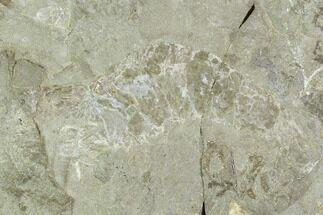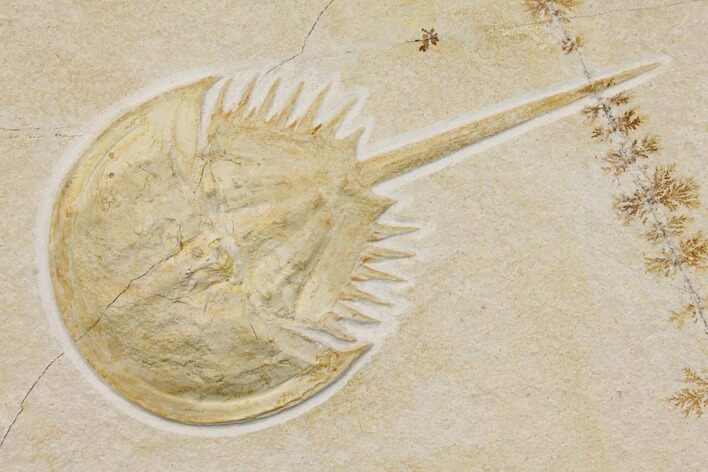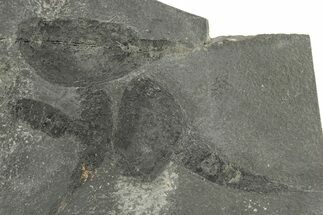This Specimen has been sold.
5.8" Horseshoe Crab (Mesolimulus) Fossil - Solnhofen Limestone
This is a rare fossil horseshoe crab (Mesolimulus walchi) from the famous Solnhofen Lagerstätte in Germany. It's good sized at 5.8" in length and has a prone preservation on a large slab of limestone. There is a repaired crack through the spine where the rock broke along a natural seem. The fossil itself has excellent three dimensional preservation that stands out from the rock up to roughly .25".
Comes with a display stand.
Comes with a display stand.
Mesolimulus is an extinct genus of arthropod. The best known examples are found in the Solnhofen limestone near Solnhofen, Bavaria, Germany. Originally assigned to the living genus Limulus, they are related to and look virtually identical to the modern horseshoe crab. Other species assigned to Mesolimulus have been recorded from Spain, Siberia, and (questionably) from Lebanon. Horseshoe crabs in general date to the Ordovician Period, more than 440 million years ago, and late Paleozoic Euproops fossils indicate that they have changed little over the last 300 million years.
The Solnhofen limestone is a famous Upper Jurassic lagerstätte in Germany. It is where one of the most famous fossils of all time, Archaeopteryx, was found. The fine-grained limestone makes excellent building material, which has led to heavy quarrying over the past two centuries. In the process, some spectacular fossils were unearthed, including fossil dragonflies, fish, pterosaurs, shrimp, horseshoe crabs, and many more.
This area represents an ancient archipelago at the edge of a sea. Due to high salt content, the lowest levels in the water column could not support much life and were largely devoid of oxygen. This lack of oxygen and scavengers on the bottom of the sea led to beautiful fossil preservation.
This area represents an ancient archipelago at the edge of a sea. Due to high salt content, the lowest levels in the water column could not support much life and were largely devoid of oxygen. This lack of oxygen and scavengers on the bottom of the sea led to beautiful fossil preservation.
SPECIES
Mesolimulus walchi
LOCATION
Eichstatt, Germany
FORMATION
Solnhofen Limestone
SIZE
5.8" long on 11.7 x 10.4" limestone
CATEGORY
SUB CATEGORY
ITEM
#143779
We guarantee the authenticity of all of our specimens.
 Reviews
Reviews












